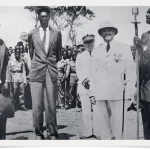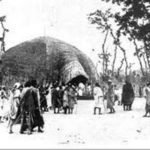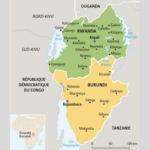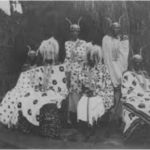The Marriage And Affinal Ties Among Banyarwanda
In all areas the wives retained membership of their own lineage and became adopted members of the husbandts household. In cases of ritual obligation, as for instance after childbirth, a wife had to go to the shrine of her own lineage. Moreover she retained the right of protection in her own lineage. Patrilineal affiliation of the children was subject to the transfer of the bride-wealth.
Apart from these characteristics which were valid for both Tutsi and Hutu in all parts of Rwanda, we find some differences related to these variables. The extent of the control over marriage alliances in this context have been dealt with when discussing differences between the umuryango and the inzu in the different areas and groups of people. Marriage was virilocal among Hutu but was more often than not neo-local among Tutsi. This is related to the fact that the role of the Hutu wife was primarily one of child bearer and as furnishing labour for agricultural production which necessitated residence on her husband’s land. Women could not own land but had the usufruct of their husbandts land subject to the duration of the marriage. On the other hand the pattern of neo-local marriages among Tutsi is concomitant with the mobility of the Tutsi husband, the lack of agricutural duties of the Tutsi wife and the usefulness of having links in different parts of the country which served as channels of influence and sources of information.
Ideally the bride-wealth was one cow, but among poor people, including Tutsi and Hutu, the bride-wealth often consisted of goats or hoes. Moreover in the North and North-West we find evidence that the bride-price was sometimes in the form of groom-service in which the husband had to work a certain number of days for a certain period for his father-in-law. Among Tutsi and Hutu alike the parents of the bride gave the parents of the bridegroom a return presentation equal in value to the bride-wealth. This was called
indongoranyo. In case of divorce, both the bride-wealth and the indongoranyo were returned but if the indongoranyo had not as yet been paid, the bride-wealth did not need to be returned. In central Rwanda, important Tutsi families did not accept bride-wealth, neither did the King, while other important Tutsi paid their indongoranyo on the same day as the marriage took place. This must be seen against the background of their quest for freedom from indebtedness in relation to political manoeuvring. In the same light must be seen firstly, the occurrence of child marriages outside central Rwanda, and secondly, the existence of the levirate and ghost marriage in the peripheral area. The latter were related to the role of the wife as a provider for the matri-segment and of the increase of the lineage. Since the wife’s security is only provided for through the institution of marriage, the marriage tie had to be continued with another member of the inzu. This was normally the deceased husband’s brother or his son by a senior wife.
The absence of these institutions in central Rwanda indicate weaker control exercised by the lineage over the wives of their members, and the subordination of the role of kinship and affinal relations to the political structure. This is concomitant with the greater importance of the wife in providing new political links rather than in producing food and children for the lineage. In the case of a widow, the freedom obtained through her husband’s death again enabled her to be used for the creation of new political links
https://uk.amateka.net/the-marriage-and-affinal-ties-among-banyarwanda/https://uk.amateka.net/wp-content/uploads/2019/10/kigeli-4-rwabugili.jpeghttps://uk.amateka.net/wp-content/uploads/2019/10/kigeli-4-rwabugili-150x150.jpegHistory of kingsIn all areas the wives retained membership of their own lineage and became adopted members of the husbandts household. In cases of ritual obligation, as for instance after childbirth, a wife had to go to the shrine of her own lineage. Moreover she retained the right of protection in...BarataBarata rpierre@ikaze.netAdministratorAMATEKA | HISTORY OF RWANDA




